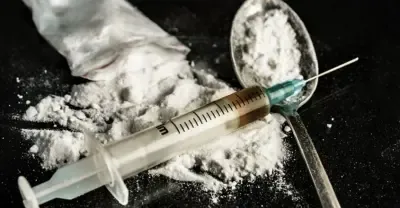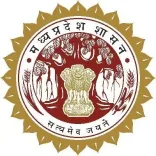Is Nagaland Border the Next Hub for Drug Smuggling Near the ‘Golden Triangle’?

Synopsis
Key Takeaways
- Nagaland shares a 215 km border with Myanmar.
- It is located near the notorious ‘Golden Triangle’.
- Authorities have registered 270 drug-related cases in the last year and a half.
- A total of 465 individuals have been arrested for drug trafficking.
- Community awareness initiatives are actively being implemented.
Kohima, June 26 (NationPress) A senior IPS officer revealed on Thursday that Nagaland shares a 215 km long porous and unfenced border with Myanmar, placing it in close proximity to the notorious ‘Golden Triangle’. This situation has turned the state into a critical transit hub for various illicit drugs heading to other regions.
During the observation of the International Day Against Drug Abuse and Illicit Trafficking, Kohima-based Superintendent of Police for Narcotics, Shinde Suresh Kailasrao, emphasized that the infamous ‘Golden Triangle’, adjacent to Indian borders, serves as a significant center for drug smuggling.
“Combating illicit drug trafficking presents a substantial challenge for law enforcement agencies, as traffickers continuously modify their routes,” the IPS officer stated during a media briefing.
He reported that over the past year and a half, the Nagaland police have recorded a total of 270 cases under the Narcotic Drugs and Psychotropic Substances (NDPS) Act 1985 and arrested 465 individuals linked to trafficking.
The majority of drug seizures, including heroin and ganja, occurred along the Dimapur-Imphal National Highway-2. Following the launch of the War Against Drugs campaign by Nagaland Chief Minister Neiphiu Rio, the state police have intensified their efforts and are collaborating closely with district administrations and various departments.
Numerous awareness and preventive initiatives have also been implemented in schools, he noted. Reflecting on this year’s theme for the “International Day Against Drug Abuse and Illicit Trafficking,” titled “Break the Cycle,” Shinde Suresh highlighted the emphasis on preventing trafficking and reducing demand.
He urged the public to share any information regarding drug trafficking with the police, assuring them that their identities would remain confidential.
Bernice D, Joint Director (Prevention) at the Nagaland State AIDS Control Society, noted that the state government is taking proactive measures to tackle the issue of drug abuse and related challenges.
She stated that every department within the state government is taking the matter seriously and has commenced efforts to foster a drug-free environment for future generations.
The official acknowledged the significant challenges posed by the extensive drug network but expressed confidence that with the united efforts of all stakeholders—including the government, media, and public—the issue can be mitigated.
Stating that they are focusing on three primary areas to combat drug abuse—supply reduction, demand reduction, and harm reduction—Bernice emphasized that the problem must be addressed considering its biological, psychological, and socio-economic impacts.
She also mentioned a notable decrease in HIV prevalence in Nagaland over the past two decades, while recognizing the extensive social repercussions of drug abuse. The aim is to ensure that drug users do not contract HIV/AIDS.






